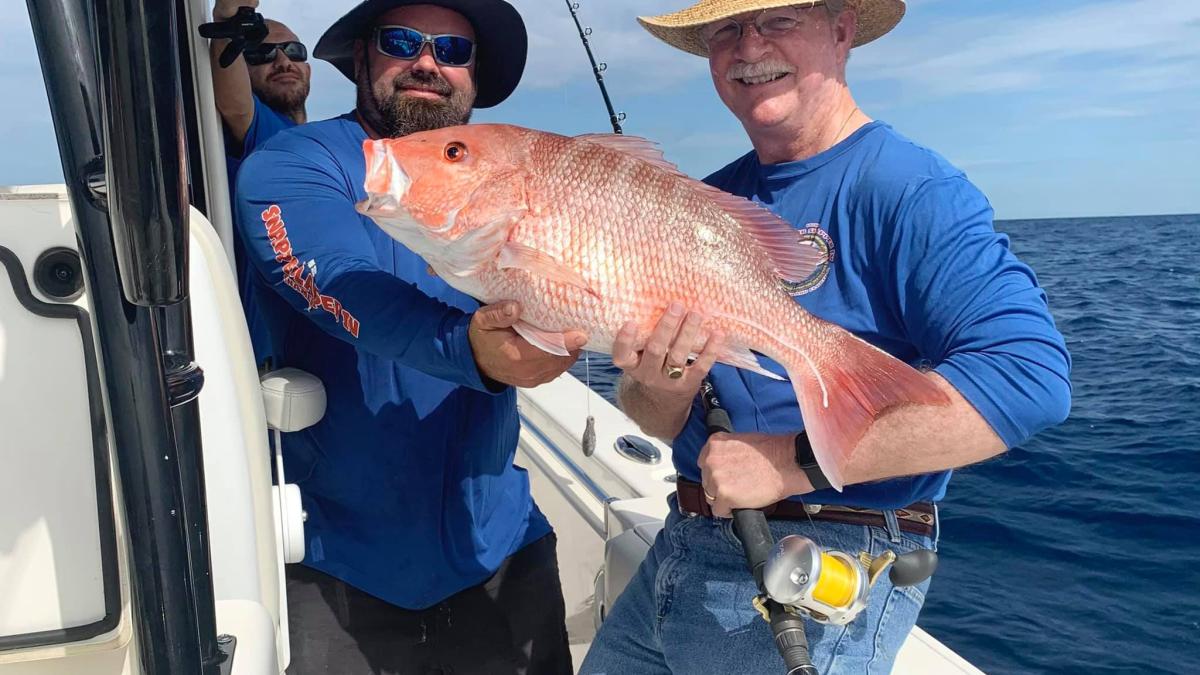Reps. Rutherford, Soto and Sen. Scott Introduce the Bipartisan, Bicameral Red Snapper Act

WASHINGTON, D.C. – On Thursday, U.S. Congressmen John H. Rutherford (R-FL-05) and Darren Soto (D-FL-09), and Senator Rick Scott (R-FL) introduced the bipartisan, bicameral Red Snapper Act to stop the National Oceanic and Atmospheric Administration (NOAA) from unilaterally closing the red snapper fishery in the South Atlantic until reliable and accurate data from the soon-to-be completed independent study, the South Atlantic Great Red Snapper Count, is incorporated into the stock assessment. A recreational fishing closure would be devastating for our coastal economies in the South Atlantic and destroy the way of life for charter captains, anglers, and local businesses.
The Red Snapper Act, H.R. 470, is being introduced by 16 additional cosponsors in the House, including Representatives Aaron Bean (FL-04), Gus Bilirakis (FL-12), Buddy Carter (GA-01), Byron Donalds (FL-19), Neal Dunn (FL-02), Mike Ezell (MS-04), Russell Fry (SC-07), Scott Franklin (FL-18), Carlos Gimenez (FL-26), Laurel Lee (FL-15), Anna Paulina Luna (FL-13), Nancy Mace (SC-01), Brian Mast (FL-21), Maria Salazar (FL-27), Austin Scott (GA-08), and Daniel Webster (FL-11).
“For over a decade, the South Atlantic fishing community has worked hard to rebuild the red snapper stock, a highly sought after reef fish that plays an integral role in our local economy,” saidRutherford. “Thanks to their concerted efforts, anglers are seeing more red snapper off the coast of Northeast Florida than ever before. Even NOAA is finally acknowledging that the population is no longer overfished. That’s why last summer’s one-day season and NOAA’s recent management actions are so confounding and ridiculous. Widespread bottom closures that threaten Northeast Florida’s fishing economy are not the answer. Accurate data that helps produce informed policy is. I am proud to introduce the Red Snapper Act with bipartisan and bicameral support this Congress to encourage the implementation of better data to evaluate the actual red snapper population in the South Atlantic and stop NOAA’s draconian closures that greatly affect our area’s economy and livelihood.”
“I’m proud to co-lead this bill with Representative Rutherford and Senator Scott to ensure Florida anglers have the opportunity to fish for red snapper in the South Atlantic,” saidSoto. “We have ample data showing that red snapper seasons help support coastal economies and the national economy overall—especially in Florida. It is critical for NOAA to review results from the ongoing independent study to ensure the livelihoods of our coastal communities are not threatened. We hope that our colleagues in the House and Senate pass this bill swiftly and send it to the president’s desk.”
Senator Rick Scott said, “Florida’s fishing industry is a multi-billion dollar economic driver in our state, supporting hundreds of thousands of jobs and attracting visitors to communities along our coast. We’ve made great strides in Florida to ensure our natural resources are preserved and protected for years to come, including rebuilding the Red Snapper population. I’m proud to work with Congressman Rutherford on the Red Snapper Act to support our state’s commercial and recreational fishing industry and ensure their success isn’t limited by federal government’s outdated data and regulations.”
This week, NOAA released a proposed rule to alter management of red snapper in the South Atlantic as part of a legal agreement. The rule would prohibit recreational anglers from bottom fishing from December – February for 55 species, including red snapper, off of Florida’s Atlantic coast from Nassau County through Cape Canaveral. This management decision is based on data that we know does not provide an accurate picture of the red snapper stock. In fact, NOAA recently stated that recreational effort estimates could be off by as much as 40 percent.
The Red Snapper Act would prevent NOAA from making sweeping management decisions until the ongoing South Atlantic Great Red Snapper Count is complete and new information can be integrated into the stock assessment. The Great Red Snapper Count is an independent study Congress has funded over the last five years that will deliver new, reliable data on abundance, genomics, and mortality of the red snapper stock in 2025.
Red snapper seasons, even short ones, help support coastal economies. The six-day 2018 recreational season added $13 million to the Gross Domestic Product (GDP) for the South Atlantic region. Annually, America’s 52.4 million anglers create $148 billion in economic output, support 945,500 jobs, and contribute $1.8 billion toward conservation efforts. Florida alone adds $13.9 billion to the national economy – higher than any other state – through the manufacturing and sale of bait and tackle, lodging, tourism, charter boat trips, and more. In Florida’s 5th Congressional District, the recreational fishing industry supports nearly 4,500 local jobs and contributes $507.5 million to the local economy.
“Florida’s anglers deserve dependable access to red snapper fishing and it’s on us to ensure they do,” saidRutherford. “Let Floridians fish.”
The Red Snapper Act is also endorsed by the American Sportfishing Association (ASA), Congressional Sportsmen’s Foundation (CSF), and the Center for Sportfishing Policy (CSP), and Florida Fish and Wildlife Conservation Commission (FWC).
